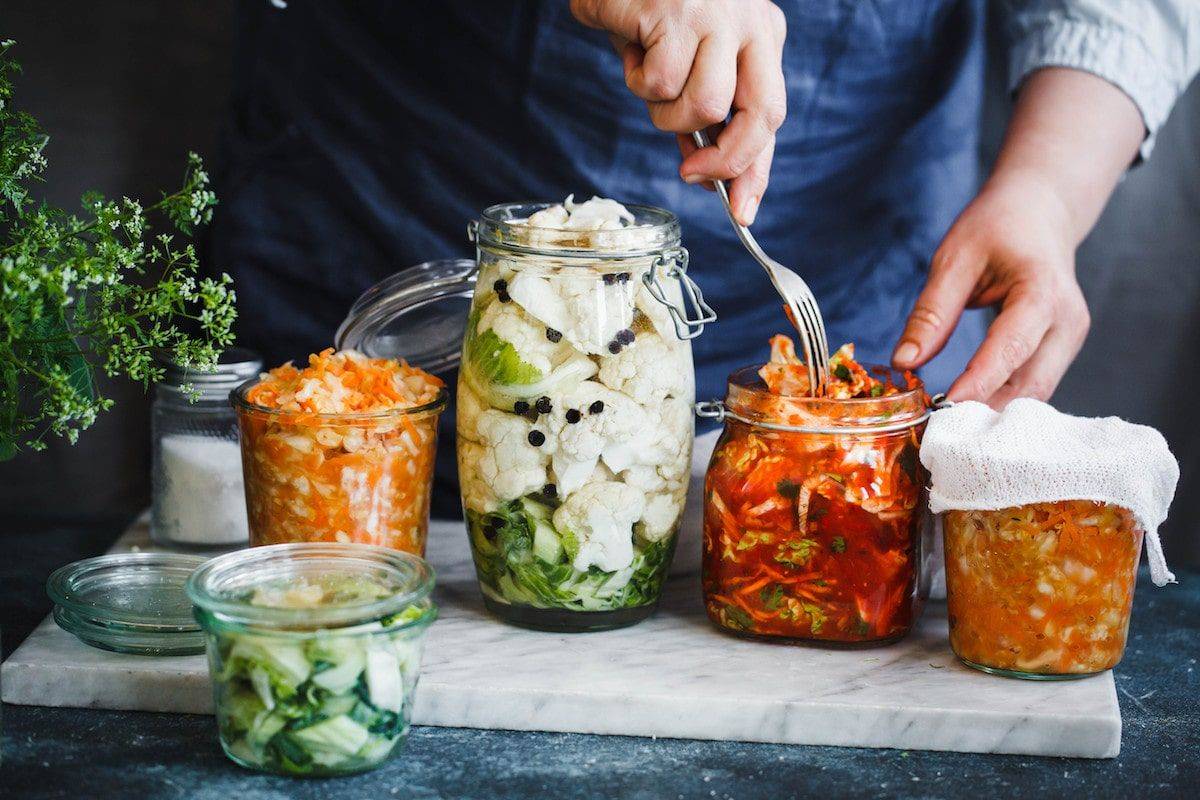Enzymed products since ancient times occupy a honorable place on the tables of different nations. The soft aroma of fermented cabbage, the piquant taste of Korean kimchi, the refreshing the playfulness of the commercials - each of these products stores a whole palette of shades and emotions. In our article, we will go on an exciting journey through the world of fermentation, get acquainted with the basics of the old craft, reveal the unique features of sauerkraut, kimchi and combi, and also share practical tips on their choice and storage.
The art of fermentation through the centuries
The process of fermentation is a magic that appeared long before the appearance of refrigerators. With the help of lactic acid bacteria, our ancestors learned to save products for the long time, while revealing the new taste faces of the usual vegetables and fruits. Thanks to the controlled conditions of fermentation, natural transformation of sugars and acids occurs, which gives the finished product a light sourness, delicate texture and a bright aroma.
Over the centuries, various crops complemented the process with their secrets: some used the charred handicrafts of the living malodium zyren, others - spicy sets of spices, thirdly trusted only perfectly clean water from springs. As a result, an amazing arsenal of culinary traditions appeared, which to this day inspire fans of enzyme around the world.
Sauerkraut: traditions and modernity
Sved cabbage is not just a classic of Slavic cuisine, but also a real storehouse of taste. It is prepared from fresh white or red cabbage, carefully rically rinse and chopped, with the addition of salt and, if desired, carrots, umbrella or caraway umbrellas. Under the pressure of its own juice, the cabbage is gradually saturated with lactic acid bacteria, acquiring a delicate crisp structure and aroma of honey-circus sourness.
In the modern world, sauerkraut has gained new forms: it is combined with apples and beets, seasoned with dried apricots and hawthorn berries. This approach allows you to enrich the usual taste with unexpected notes, turning a simple dish into a gastronomic masterpiece. In addition, it is easy to combine vegetables with a variety of vegetable salads, vegetable stews, casserole and even hot sandwiches.
Kimchi: Bright palette of tastes and textures
Kimchi is a symbol of Korean cuisine, which is rightfully considered one of the most colorful fermented products. The basis of the classic recipe is Chinese cabbage, radish and chili pepper, abundantly seasoned with garlic, ginger and fish sauce. Bright red color and acute taste gamut make kimchi an indispensable accent of any dish.
There are many regional options for Kimchi, where carrots, cucumbers, radishes or even zucchini are taken as a basis. In each corner of Korea add its own branded stroke - a clove of garlic, a pinch of sesame seeds, a slice of citrus fruits or the level of severity, reflecting the climate and taste preferences of local residents.
Giving kimchi to the rice, noodles or baked tofu, you create an unusual harmony of tastes: the piquancy of the cuts is found with a tart sourness, and the crispy habitus of vegetables smoothly balances the dense texture of grains and protein products.
Combuche: Ancient drink in a new light
Combuchery, or tea mushroom, is a unique sour-sour drink with a slightly pronounced sparkle. It is prepared by fermentation of tea with sugar in the presence of a symbiotic colony of microorganisms - yeast and bacteria that form a "tea mushroom". During fermentation, vinegar, milk and other organic acids are formed, which give the commercial freshness and light fruit tint.
In the modern performance, the commercials often insist on berries, herbs or spices: ginger, mint, rose petals, pieces of apple, rosehip berries - these additives create bright aromatic compositions. The drink perfectly quenches thirst, gives a feeling of lightness and fills with inspiration on a hot summer day or on a cozy evening by the fireplace.
It is not difficult to prepare a comable at home: it’s enough to follow a classic recipe, choose a high -quality living mushroom and provide optimal fermentation conditions. Such a drink will become a real pearl on your table and the reason for pride in front of the guests.
Chips and storage tips
- Check the date and storage conditions. Enterified products are best purchased from trusted manufacturers or in specialized stores.
- Keep in a cool place. Sour -milk products retain the texture and aroma at a temperature of 2 to 6 ° C.
- Pay attention to the smell and color. Natural fermentation gives an easy sour aroma without signs of mold or rot.
- Try seasonal novelties. With the onset of spring and autumn, limited tastes appear: a refreshing comable with spring herbs, a spicy cabbage assorted with pumpkin or carrots.
Conclusion
Enzymed products are not just a tribute to traditions, but also the opportunity to open new taste horizons every day. Sved cabbage, kimchi and battalion commander have a rich history and give vivid gastronomic impressions. They will decorate your table, diversify the daily menu and become a source of inspiration for experiments in the kitchen. Let the art of fermentation become your reliable satellite in the world of taste, and each piece and sip will give pleasure and ease of an elegant gastronomic adventure.




14